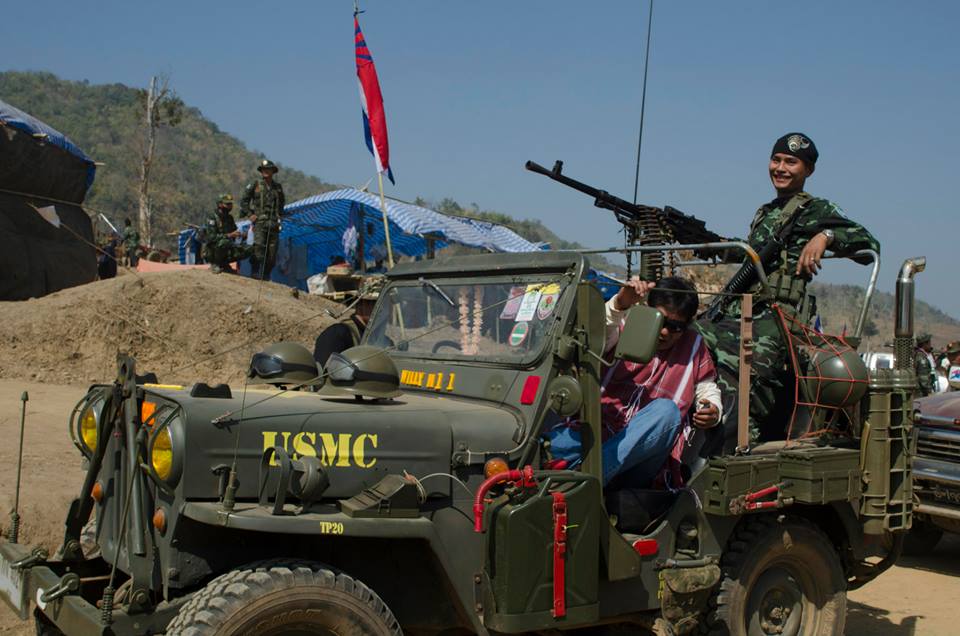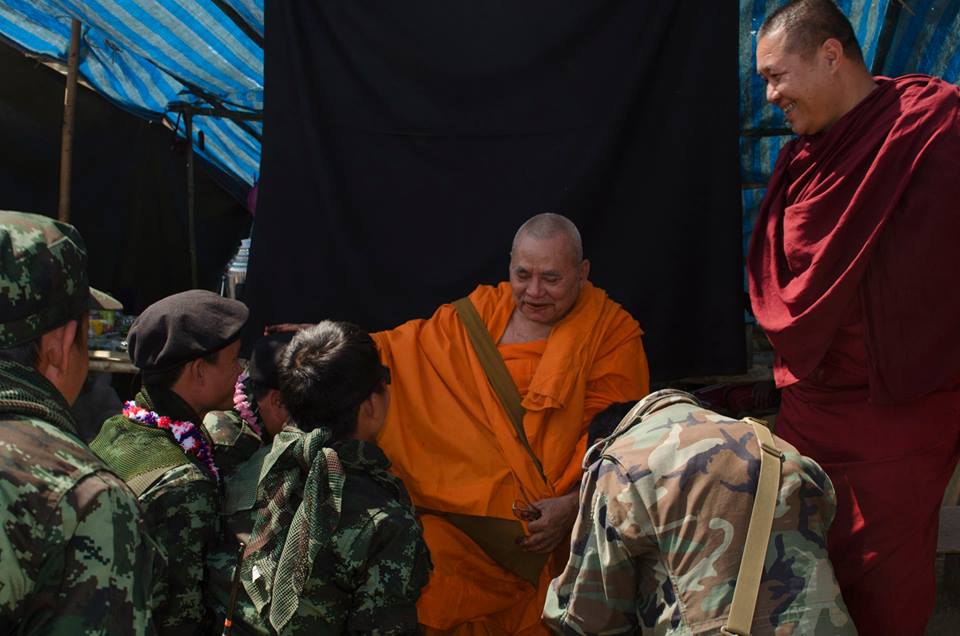In Myanmar, Simmering Grievances Could Sabotage Years-Long Peace Process
By John Arterbury
Peace remains elusive in one of the world’s longest-running civil wars. The ethnic Karen have fought for greater autonomy for nearly 70 years in their homeland of Myanmar’s southeast Kayin state. While ongoing peace talks may provide a framework for formally ending the conflict, a durable solution will likely remain beyond reach unless the underlying conditions that animate Karen grievances are addressed.
The Myanmar state made international headlines beginning in 2017 for pursuing what many experts report are genocidal policies towards the country’s unrecognized Muslim Rohingya minority, after years of anti-Muslim communal violence. But since 2012, Myanmar has also embarked on an ambitious project of brokering ceasefires with the country’s many armed groups seeking greater autonomy on behalf of officially recognized ethnic groups. Myanmar has inked ceasefires with Karen rebels – the Karen National Union (KNU) and its armed wing the Karen National Liberation Army (KNLA) – in addition to agreements with ethnic Shan, Chin, Mon, and Karenni groups.

Karen in their traditional garb. Source: John Arterbury
This process brings hope for peace closer than it has been in decades, but a final settlement remains beyond reach unless the government tackles the grievances that fuel the country’s myriad separatist movements.
Military abuses hamper the peace process
The Myanmar military, or Tatmadaw, nearly quashed the decades-long KNU rebellion in the 1990s and seized their de facto capital of Manerplaw. A series of government offensives drove KNLA forces and hundreds of thousands of civilians into Kayin state’s hilly flanks, where the KNU still wields local control. Unable to recapture remaining Karen territory, the government adopted a less lethal approach toward the rebels, first bringing the KNU into an initial 2012 ceasefire and then cementing these efforts with the 2015 Nationwide Ceasefire Agreement.
The rise of the National League for Democracy and Nobel Peace Prize Laureate Aung San Suu Kyi into Myanmar’s government in 2015 and 2016, respectively, led to initial optimism that the peace process with the Karen would continue advancing. These hopes proved unfounded: talks remained so stagnant that the KNU declared its intent to temporarily suspend its role in the peace negotiations in October 2018, although the group has since signaled its willingness to resume. Such moves underscore the fragility of the process.

KNLA personnel in a Willys jeep. Source: John Arterbury
The inability of the Myanmar government to resolve underlying Karen grievances has not only hindered talks, but also risks creating a situation in which conflict could return to Kayin state even following a peace agreement. Perhaps most notably the government has been unable or unwilling to reign in pro-state militias, such as the Border Guard Force (BGF), that provide security alongside the Tatmadaw in some minority areas. In Kayin state, the local BGF are mostly comprised of former pro-government Karen militia members, such as those from the defunct Democratic Karen Buddhist Army.
These BGF commanders have used their positions over the past several years to settle local scores and engage in exploitative commercial enterprises. For instance, BGF Battalions in Papun district have been accused by human rights groups of routinely corralling civilians into forced labor, arbitrarily detaining villagers, and confiscating land from residents. In one such case, a BGF battalion coerced villagers in Papun’s Dwe Lo Township into surrendering a cashew plantation for the construction of a BGF outpost. Elsewhere in Papun, villagers report having to pay bribes to the BGF to avoid being roped into duties as personal porters. This activity is commonplace and mirrored across areas of Kayin state where “mixed control,” or the presence of both KNU and government forces, is found.

KNLA personnel celebrate Karen Revolution Day. Source: John Arterbury
These behaviors stem in part from the long-standing practice of pro-government armed groups to live off the land. Throughout much of its history, the Tatmadaw and affiliated groups have relied on local patronage and extortion networks to supply their troops and fill their coffers. As such, they often exploit local resources – through land grabs, forced recruitment, and taxation – to support military activity. That such practices continue despite a formal ceasefire has made KNU leadership reticent to accept government offers and has undermined faith in peace efforts at the local level.
Development projects complicate talks
In tandem with this, the Myanmar government has used peace efforts to expand its role in contested areas. The state began advancing its plans for constructing the Hatgyi Dam in earnest following the 2012 KNU ceasefire, with tension over the dam’s site on the Salween river causing intermittent clashes between BGF and KNLA forces between 2014 and 2016. The dam, which would export electricity largely to neighboring Thailand, could threaten the livelihoods of Karen villagers and others living along the Salween’s banks. Ignoring local concerns is standard for state-led development efforts, which consistently overlook traditional land stewardship practices, often at the expense of villagers who depend on an agrarian economy to sustain their families.

Buddhist monk Saw Wizana, known as “Saw Rambo” for his role in the Karen insurgency. Source: John Arterbury
Myanmar government projects can be stalled by opposition from Karen groups. In May 2018, for example, the Tatmadaw paused plans to rebuild a major road amid heightened military deployments to Papun district following pushback from locals and the KNU. The controversy over the Hatgyi Dam, as well as the KNU’s willingness to counter government development efforts, illustrate that the government’s plans for Kayin state create additional hurdles for any lasting peace. Mitigating the problems caused by state-led development and militias will be key to guaranteeing that any final peace effort is able to withstand the test of time.
Absent real reform from the government’s side, the KNU and many Karen will continue to view peace efforts with skepticism. As some critics note, the peace talks could be mere window dressing for the government, serving more as a tactical ceasefire than a tangible exercise in peacebuilding. If the government hopes to achieve a lasting peace in Kayin state, it must end predatory development and military policies that estrange communities and threaten livelihoods. Doing so would improve the government’s credibility in penning a serious agreement while also messaging to local residents and the KNU leadership that it is making a good faith effort to put southeastern Myanmar on a positive trajectory.
John Arterbury is a Yemen analyst at the Navanti Group, and former Thailand-based freelance journalist focused on Myanmar security issues. He’s on Twitter at @JohnArterbury.

